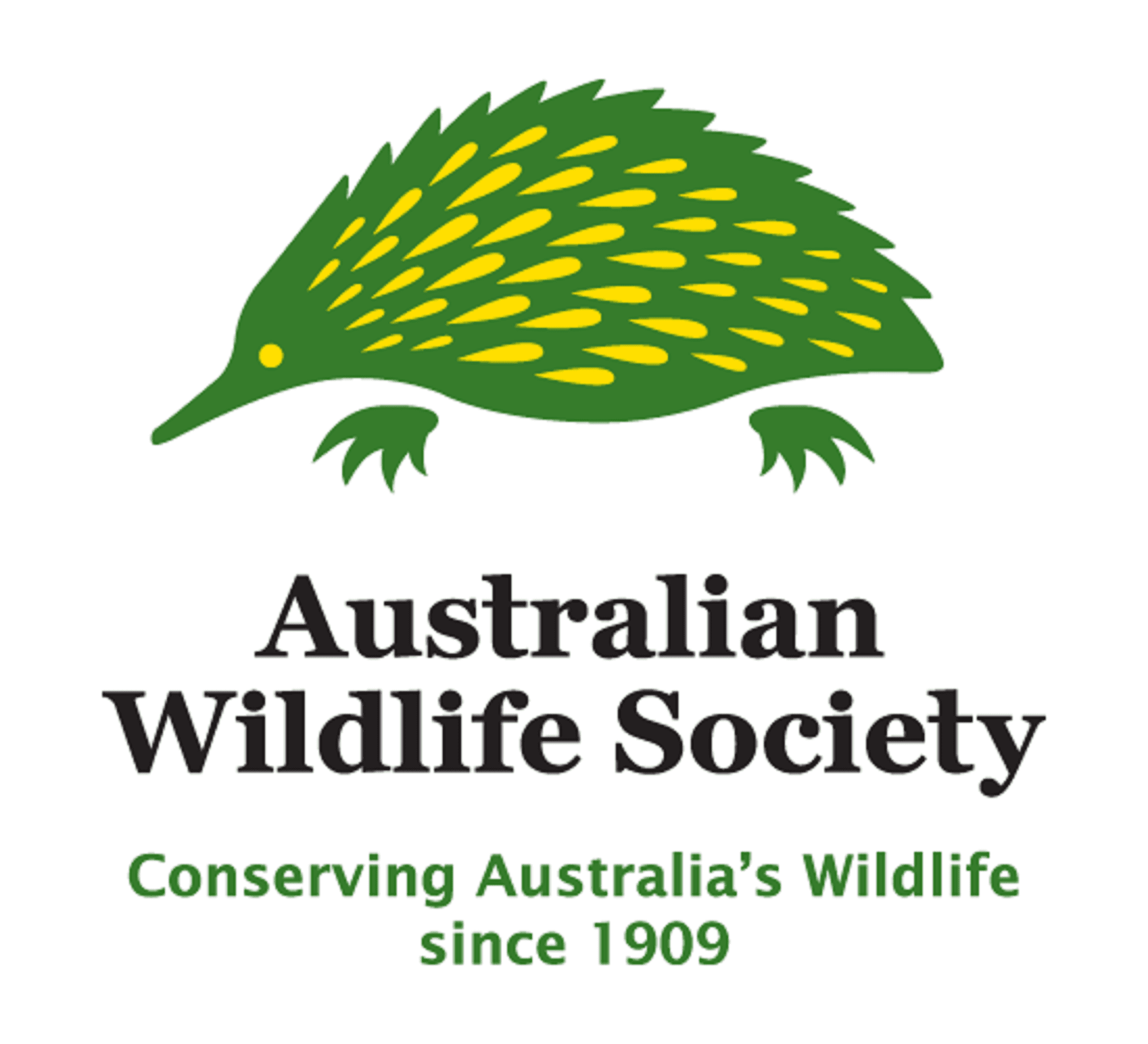
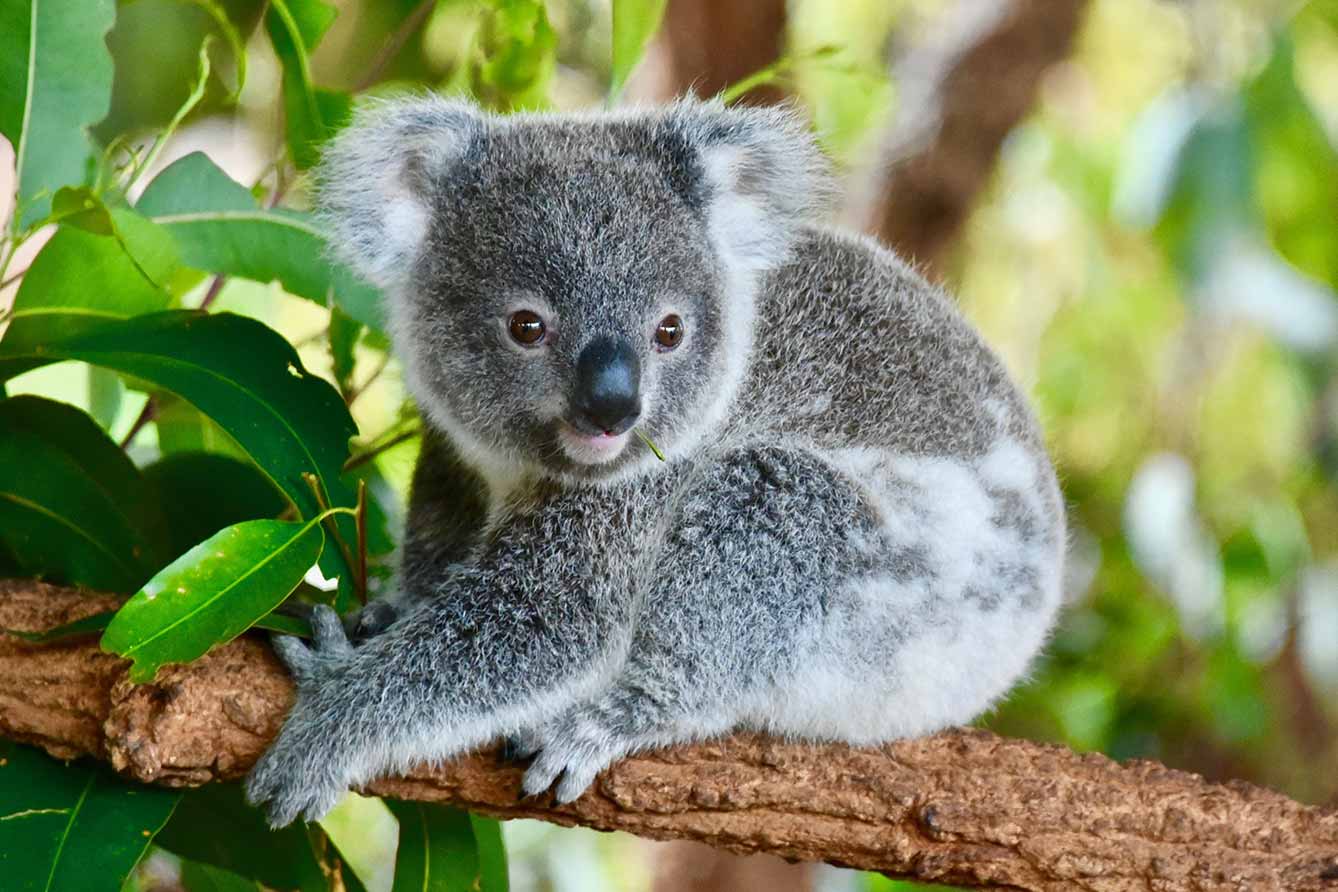
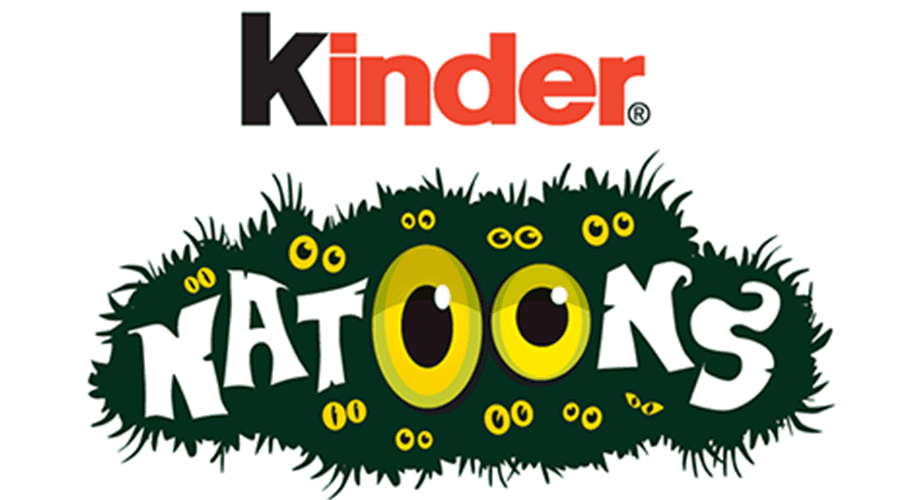
Kinder Natoons Sponsorship to save endangered native wildlife
In 2019, the Australian Wildlife Society accepted a significant sponsorship from family-owned confectionery brand, Ferrero as part of their new Kinder Natoons range which aims to help save endangered wildlife across Australia and New Zealand. Kinder’s Natoons collection features a native Australasian animal toy range to provide parents with the tools to educate their children about the importance of native wildlife. The Society has selected several wildlife conservation programs in each state of Australia and one in New Zealand as recipients of conservation funding under this program.
The Kinder partnership supports a range of wildlife projects helping to protect Australia’s native wildlife.
New South Wales
Friends of the Koala based in Lismore. The Australian Wildlife Society admires their dedication and hard work saving and rehabilitating critically endangered injured koalas on the north coast of New South Wales.
Friends of the Koala have an amazing network of rehabilitators working around the clock to rescue and care for sick, injured and orphaned koalas located in the Northern Rivers of NSW. The rescued koalas live in a koala care centre in Lismore, NSW until they are strong enough to get back out in the wild. Aminya was an orphaned koala joey, who practised her climbing skills during rehabilitation, before being released - read more about Aminya’s story HERE.
FUN FACT: Are you a big sleeper? Maybe you’re part koala. These furry friends spend most of their time snoozing in the treetops (when they’re not snacking on gum leaves, that is). Koalas can sleep for up to 18 hours a day!
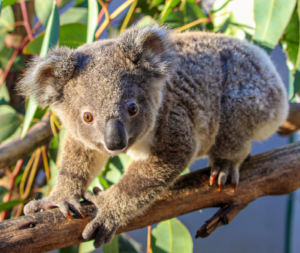
Koala (Phascolarctos cinereus)
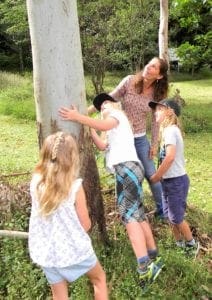
Lismore City Council ‘Upcycle’ family education day looking for koala scratch marks
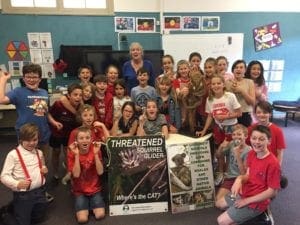
School Education Program at Eltham Public School
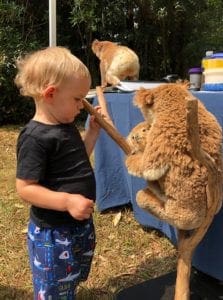
Rocky Creek Dam Environmental Family Education Day
South Australia
Wombats SA who look after the Moorunde Nature Reserve just north of Adelaide.
Wombats SA has a small but enthusiastic team working tirelessly to preserve Australia's native flora and fauna - especially the southern hairy-nosed wombats. Environmental and man-made stresses that effect wombats and their homes are monitored, and the team does their best to ease them. With the help of funds from the project, they are also able to teach school children that wombats are part of our natural world and should be respected and treasured. MORE>>
FUN FACT: Wombats tend to be slow and a little bit stocky, but they can run pretty fast when they need to! A wombat can reach a top speed of over 35 km an hour! That’s almost as fast as Usain Bolt’s top recorded speed. How is your wombat knowledge? Would you like to challenge your friends? Download the wombat 'chatterbox' HERE.
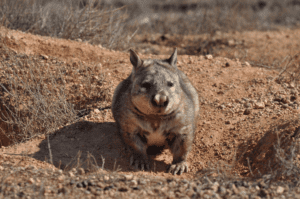
Image: Karen Collins. A southern hairy-nosed wombat (Lasiorhinus latifrons) at Moorunde Reserve
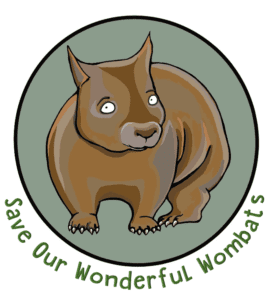
Victoria - Project One
Regional Schools Platypus Education Program located in regional Victoria.
Senior Wildlife Ecologist and Platypus expert, Josh Griffiths, from platypusSPOT, aims to educate, engage and excite children, and the community, about the endangered platypus that live in the local creeks.
Josh will talk to students at local Victorian schools about a range of topics, including:
1) What makes the platypus so interesting and unique
2) What threats do the platypus face and why
3) What can well all do to help ensure our platypus continues to survive and flourish
FUN FACT: Platypus lay eggs, have very small stomachs and adults have no teeth. The adults grind their food with hard tooth-like structures (made from keratin) that replace the teeth.
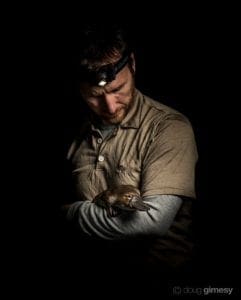
Josh Griffiths with the Australian Platypus (Ornithorhynchus anatinus). Image: Doug Gimesy.
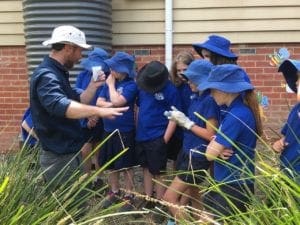
Josh Griffiths with Neerim South Primary School students. Josh is teaching the students about the importance of Platypus Conservation. Platypuses are common in the local river and dams near the school. The local waterways are traditionally known to be a hot spot for platypus drowning in opera house nets, hence the importance of Josh's lessons.
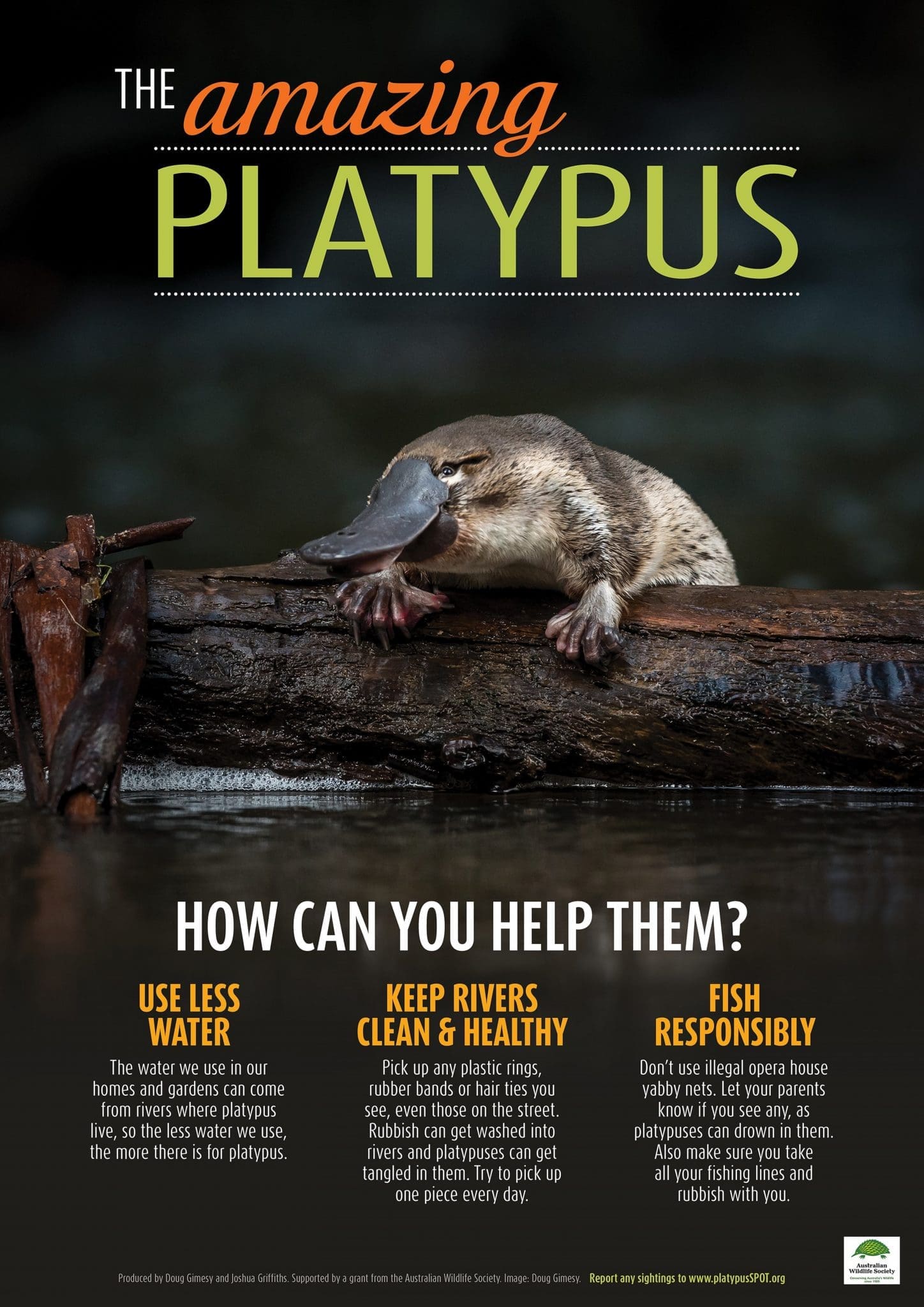
Platypus Education Poster
Victoria - Project Two
Platypus Education Group - Ambassadors Project. Platypus Education Group (PEG) aim to educate, engage and excite children, and the community, about the platypus that live in their local creeks. They achieve their aim through discussions, playground games, quizzes and more. PEG predominantly work with schools and run workshops with community groups, scout groups and homeschools. The PEG educators are made up of professional biologists, teachers, childcare workers, performers and environmentalists. Together, they combine their skills to create fun activities for children of all ages to enjoy and learn from.
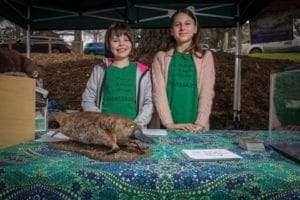
Image: Doug Gimesy. Two Platypus Education Group Ambassadors at the Belgrave Platypus Festival.
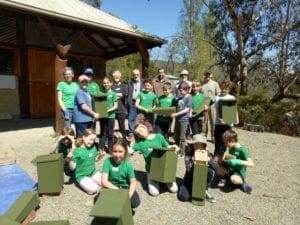
Image: Jen Ellison. Making Nest Boxes at Belgrave Men's Shed
Here's our first online Platypus Education video 🤩 We hope you enjoy it! If you or your kids have any more questions about platypus, make sure to pop them in the comments below & we'll answer them in a future video 💚Kids In Nature Network Environmental Education for Kids - EEK EnviroKids Australian Association for Environmental Education Inc. EEEC- Environmental Education in Early Childhood Kids Teaching Kids Cardi Creek Kids Southern Dandenongs Landcare Group Landcare Victoria dirtgirlworld platypusSPOT Australian Platypus Conservancy (Official) Melbourne Water Yarra Riverkeeper Association Yarra Ranges Council Parks Victoria
Posted by Platypus Education Group on Monday, 30 March 2020
Northern Territory
Wild Desserts project in Sturt National Park in outback New South Wales (NSW).
Wild Deserts is a project which aims to reintroduce locally extinct mammals to Sturt National Park in outback New South Wales (NSW). The project aims to bring back seven locally extinct mammals to the NSW corner country, using large feral-proof fenced exclosures and a range of innovative predator control and research techniques in Sturt National Park. Through our donation, Wild Deserts will use specialised netting fences to exclude feral predators and herbivores such as cats, foxes and rabbits, before reintroducing mammals that were once widespread in NSW but have not been seen for over a century. The mammals to be reintroduced are the western barred bandicoot, golden bandicoot, greater stick-nest rat, burrowing bettong, crest-tailed mulgara, the western quoll and in particular, the greater bilby. Our support will assist in the recovery of these mammals and help to prevent these mammals from becoming extinct on a national scale MORE >>
Bilbies were common throughout the arid and semi-arid regions of the Australian mainland, prior to European settlement. The bilby is now listed as a vulnerable species and is only found in isolated populations in pocket arid regions throughout Australia. Bilby populations are found within the Tanami Desert of the Northern Territory (NT); in the Great Sandy and Gibson Deserts; parts of the Pilbara and Kimberley (near Broome) regions of Western Australia; and the clayey and stony soils of the Mitchell grasslands of southwest Queensland.
FUN FACT: Did you know the Bilby’s Greek name is ‘Macrotis Lagotis’ - which means ‘big-eared’ in Greek? How rude! We think their big ears make the Bilby one of Australia’s cutest bush babies.
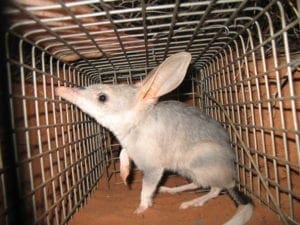
Bilby (Macrotis Lagotis)
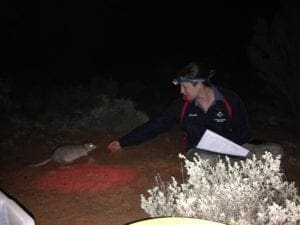
Burrowing bettong (Bettongia lesueur) sniffing a researcher
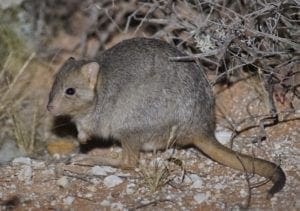
Burrowing bettong (Bettongia lesueur)

Wild Deserts fence
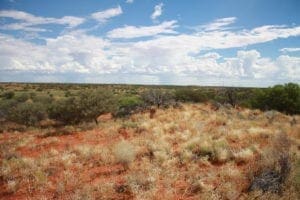
Wild Deserts landscape
Note: we were unable to secure a NT-based project and therefore the funds have been allocated directly to Bilby conservation.
Western Australia
Kaarakin Black Cockatoo Conservation Centre located in Martin.
Kaarakin is a not-for-profit, independent conservation organisation working to conserve black cockatoos through rehabilitation, revegetation, education, and research.
They rescue wild black cockatoos in distress, most having been shot, struck by vehicles, fallen from their nest, or attacked by bees, cats or other birds, or suffering the effects of poisons. The birds are taken to Perth Zoo for triage and initial treatment by specialist veterinary staff. After their treatment, many birds will make a full recovery and can be released back into the wild.
Kaarakin also runs education programs. The Kaarakin education program aims to raise awareness of, and build connections with, black cockatoos and the habitat they require.
FUN FACT: These big beautiful birds have long been believed to be a sign that rain is on the way in indigenous myths and bush lore. So, if you see a Black Cockatoo make sure you take your brolly!
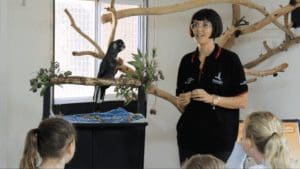
Candice (Education Officer) doing a student education session on-site at Kaarakin. She is upstaged by Chasey, one of Kaarakin's lovely Carnaby’s.
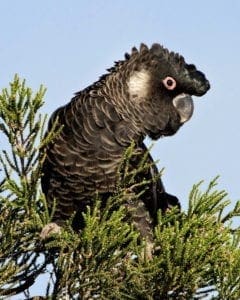
Carnaby's black cockatoo (Calyptorhynchus latirostris)
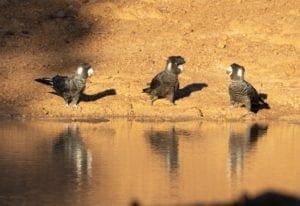
Baudin's black cockatoo (Calyptorhynchus baudinii)
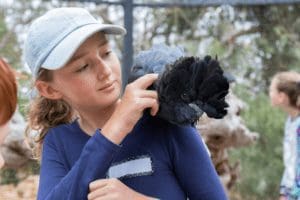
A 'Cockatoo Club' member meeting Squark, Kaarakin's friendly resident red-tailed black cockatoo (Calyptorhynchus banksii)
Queensland
Tree Roo Rescue and Conservation Centre located on the Atherton Tablelands in Far North Queensland.
The Tree Roo and Conservation Centre are contributing to save the endangered Lumholtz's and Bennett's Tree-kangaroos and rehabilitate, orphaned, injured or displaced tree kangaroos for release back into the wild. They educate the public and increase awareness of Australian tree-kangaroo conservation and the threats that bring them into care such as dogs, cars and central blindness.
FUN FACT: The tree kangaroo is the only macropod that can “walk”. They can move their hind feet independently one at a time. This helps them move along branches. They can also turn their ankles outwards to help them climb up and down tree trunks.
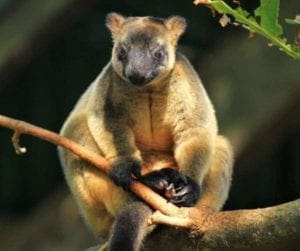
Lumholtz's Tree-kangaroo (Dendrolagus lumholtzi)
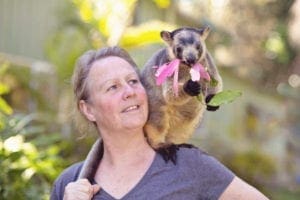
Dr Karen Coombes with Jilly, a hand raised orphaned Lumholtz’s tree kangaroo. Jilly is not blind and will be released once old enough.
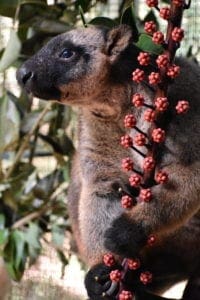
Mickie a blind adult male Lumholtz’s tree kangaroo with his favourite umbrella flower (Schefflera actinophylla)
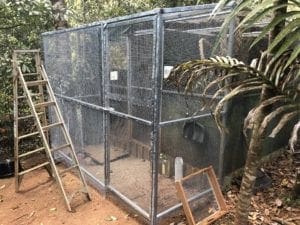
Newly completed tree kangaroo enclosures at Tree Roo Rescue and Conservation Centre
Tasmania
Trowunna Wildlife Sanctuary located at Mole Creek.
The primary goal for Trowunna Wildlife Sanctuary is wildlife conservation, education and rehabilitation. Trowunna is committed primarily to the in-situ conservation of the Tasmanian devil and aims to educate the community of the plight of the Tasmanian devil through a range of programs.
FUN FACT: Do you think you’re a big eater? Well, the Tasmanian devil can eat up to 40% of its body weight everyday! No wonder there was a ravenous cartoon character named after it.
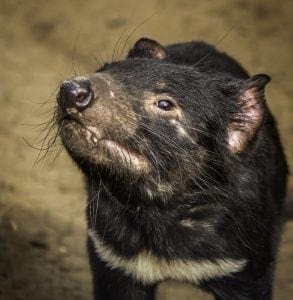
Tasmanian devil (Sarcophilus harrisii)
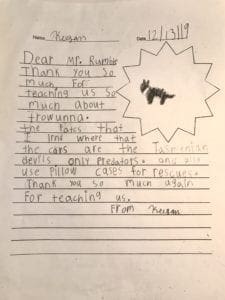
Thank you letter from the pilot session of the virtual classroom
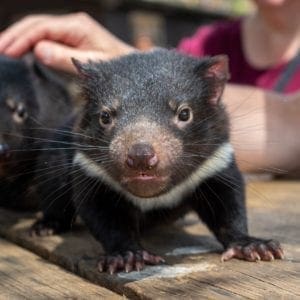
Tasmanian devil joeys during an interactive tour at Trowunna
New Zealand
We are funding conservation programs through Massey University (Palmerston North and Albany), NZ Dept of Conservation, and Manaaki Whenua Landcare Research.
Their mission is to research and conserve the iconic New Zealand Kiwi. The kiwi is an iconic bird, usually nocturnal. Adults live for decades, but chicks are very vulnerable to predators.
Emma Feenstra, PhD Candidate at Massey University, Auckland is working on kiwi (Rakiura tokoeka) conservation on Stewart Island, New Zealand. The Stewart Island kiwi is a flightless, ground-nesting bird endemic to New Zealand. Despite being New Zealand's national icon, most of us have never seen kiwi in the wild and the chance of doing so is decreasing, as kiwi are in decline nationwide. Being the somewhat cryptic, long-lived species that they are, there is still a ton of valuable information to discover in our fight to support population stability and increase. Through our donation, Emma has been able to further her research on Stewart Island kiwi conservation, and develop monitoring strategies that contribute to saving kiwi from extinction Nationwide. Emma's research explores the use of invasive and non-invasive monitoring methods for a cryptic species by comparing trail cameras, acoustic recorders and scat mapping with telemetry and tracking. Emma has captured a number of kiwi, put transmitters on them, and is now monitoring them through the breeding season to find out how well the adults and chicks survive with and without pest control. Our support has also assisted Emma with the purchase of research equipment, travel to and from the research sites in the ongoing monitoring of kiwi, and with the analysis of feral cat scats for kiwi remains.
FUN FACT: The Kiwi may be shy and much smaller than its cousins the Emu and Ostrich, but it is thought to be the world’s most ancient bird - evolving over 30 million years ago!
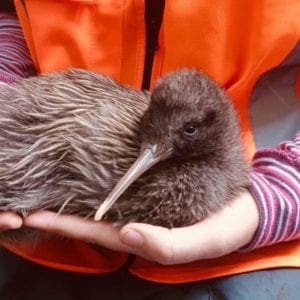
Kiwi (Rakiura tokoeka)
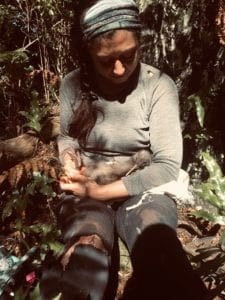
Emma and a kiwi chick
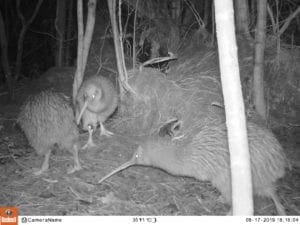
A family gathering is spotted, using wildlife cameras
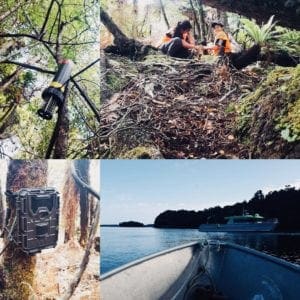
Non-invasive surveys/monitoring tools
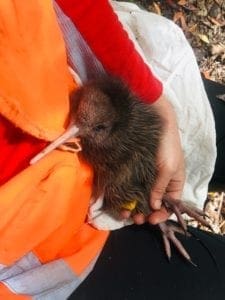
Kiwi chick being health checked
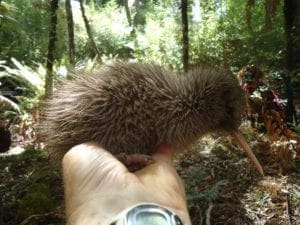
Precious taonga
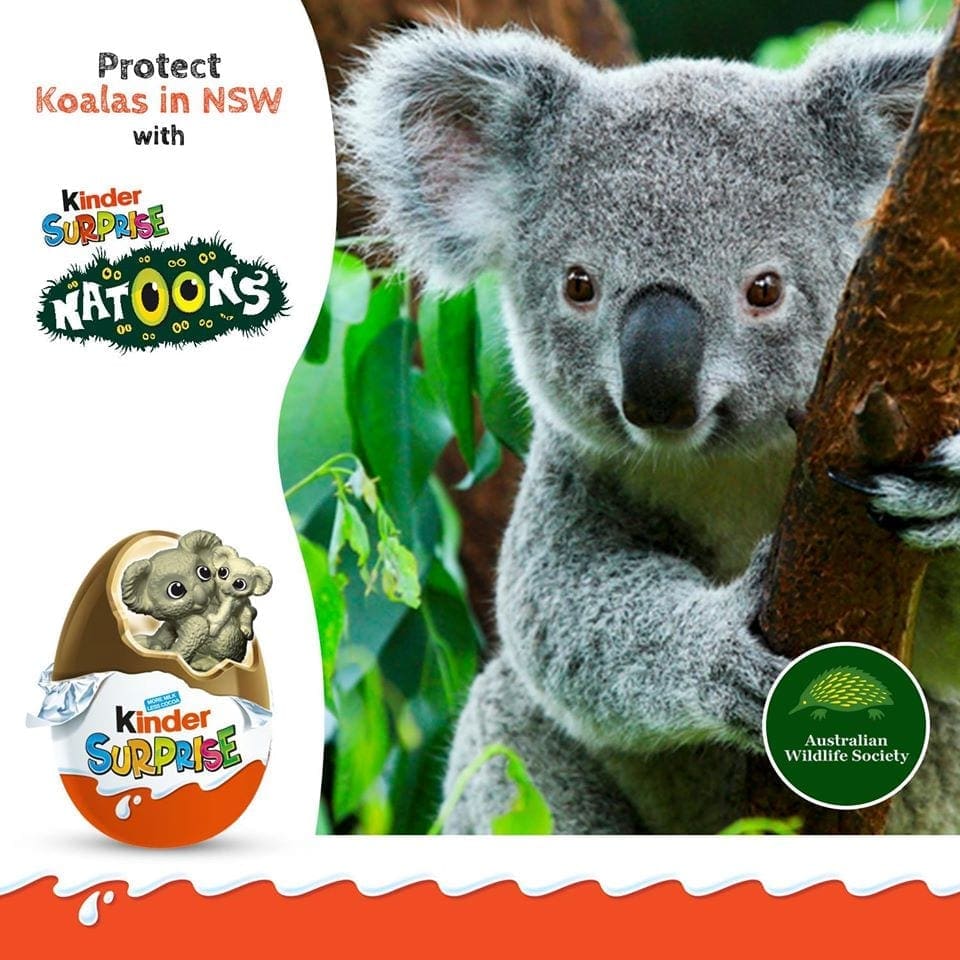
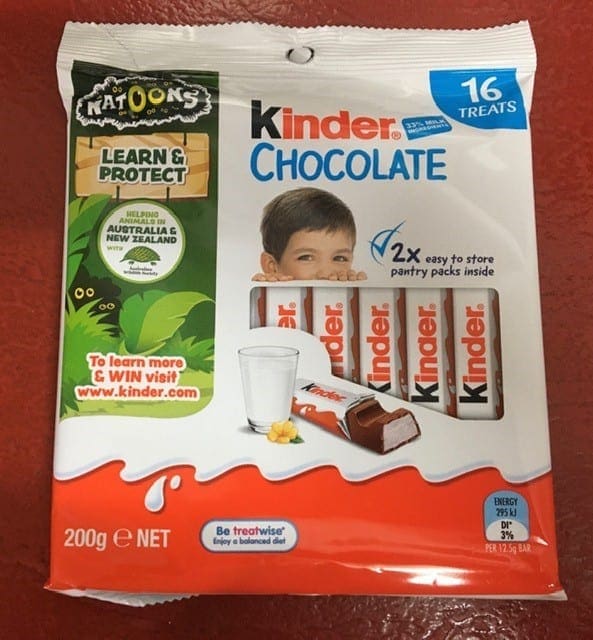
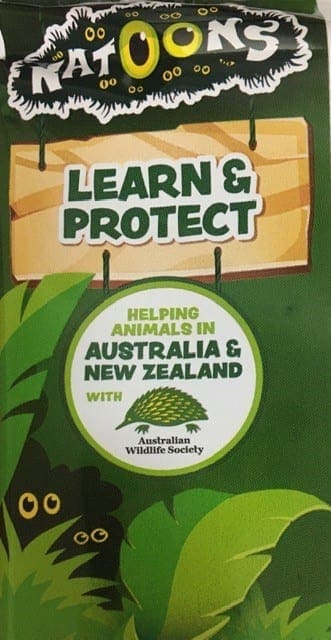
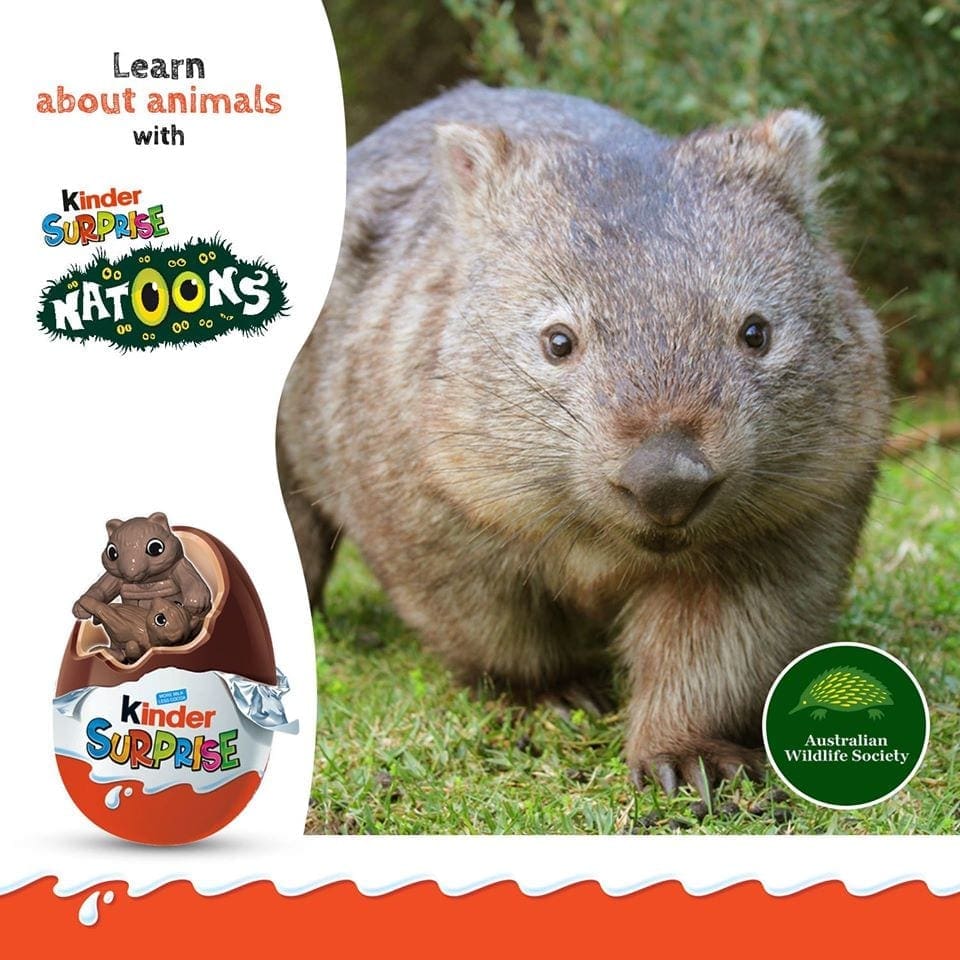
Who is Ferrero Australia?
Michele Ferrero, the son of a chocolatier, had a dream. He wanted to pioneer chocolate especially for children and for those who are children at heart, regardless of age. And so he created a delicious treat with family values at its core: Kinder Chocolate. Kinder NATOONS is sponsoring the Australian Wildlife Society, enabling us to support a number of wildlife conservation programs in each state of Australia, and one in New Zealand. Kinder is also supporting us in our mission to raise awareness of Australia’s and New Zealand’s endangered wildlife species. We acknowledge the generous support of Ferrero Australia in their Natoons program to help us raise awareness of all our endangered wildlife species through this new wildlife conservation program.
"We would like to acknowledge the generous support of Ferrero Australia. The sponsorship helps us raise awareness of native endangered wildlife species. The groups selected by the Australian Wildlife Society will see much needed funding of a number of critical conservation programs” Patrick Medway, Chief Executive Officer Australian Wildlife Society.
